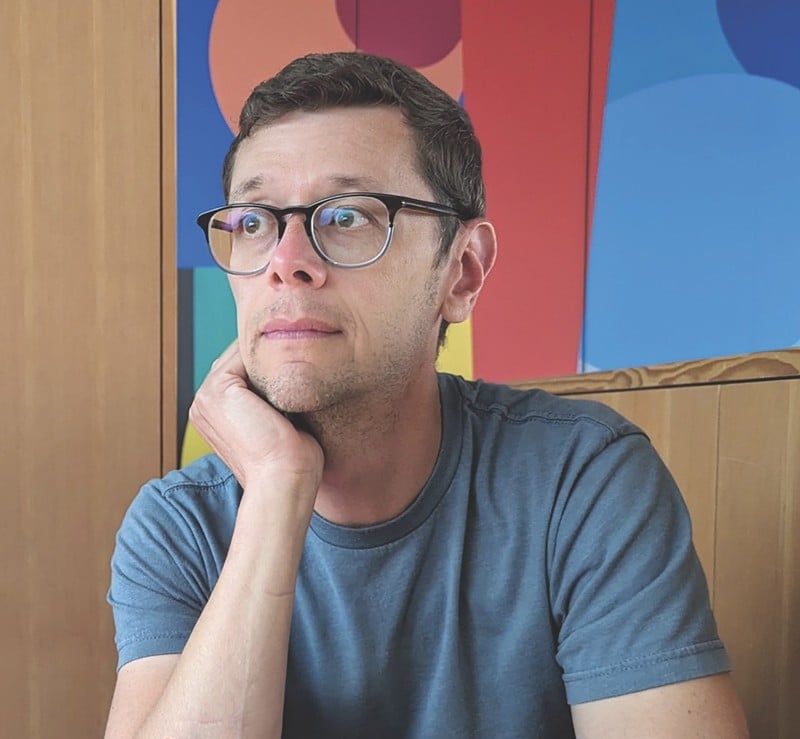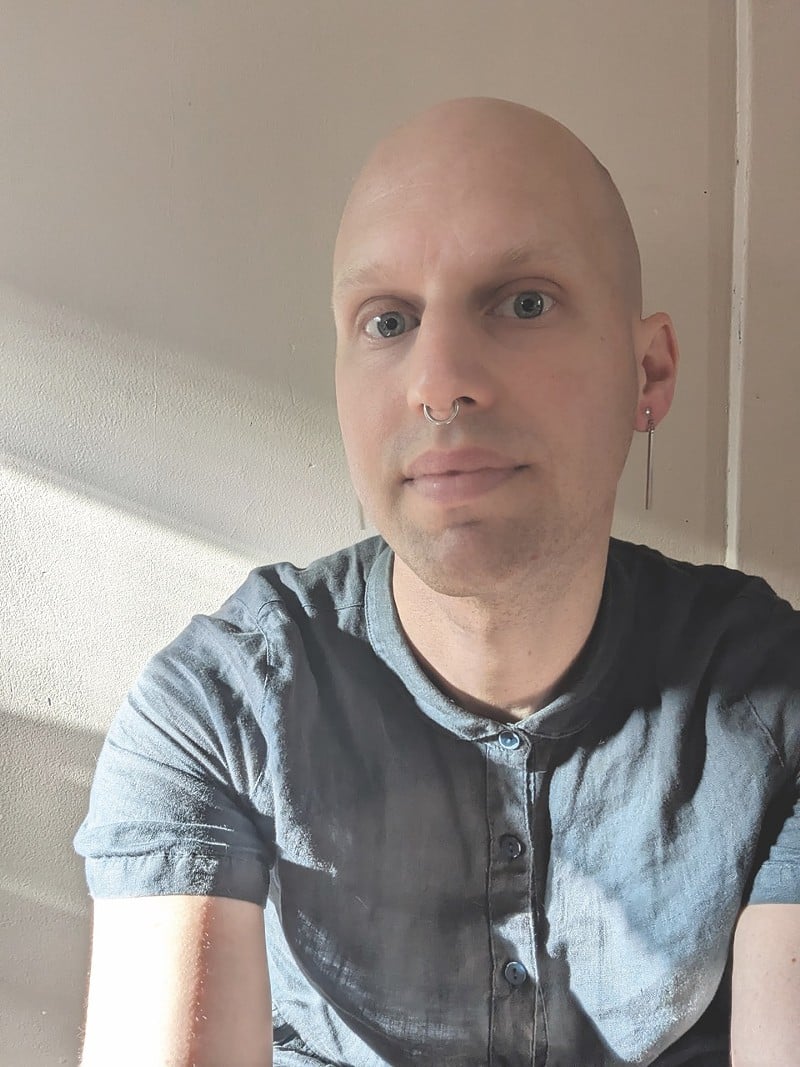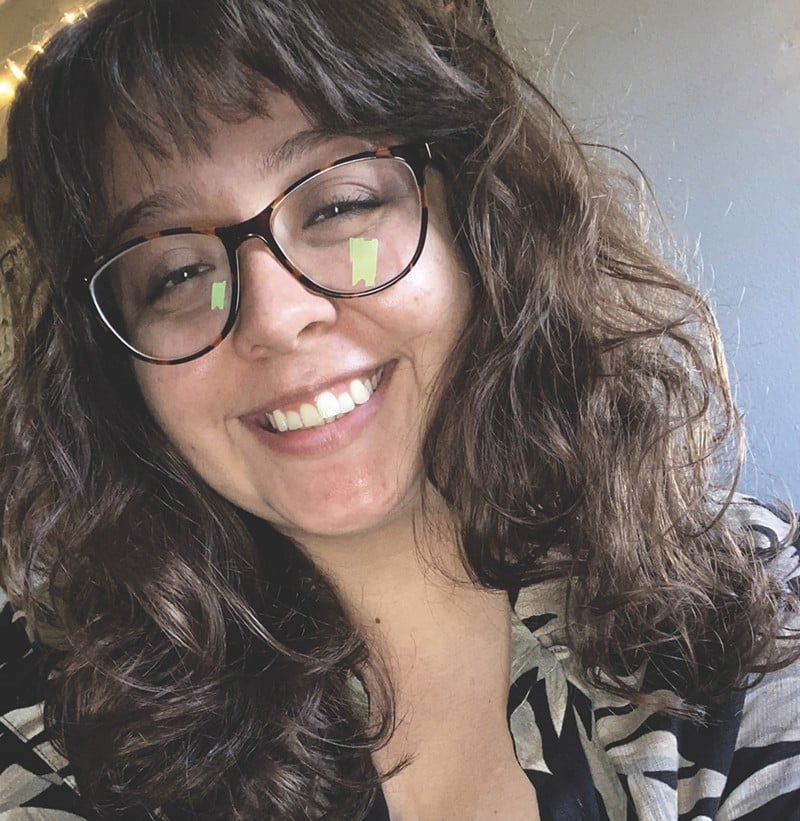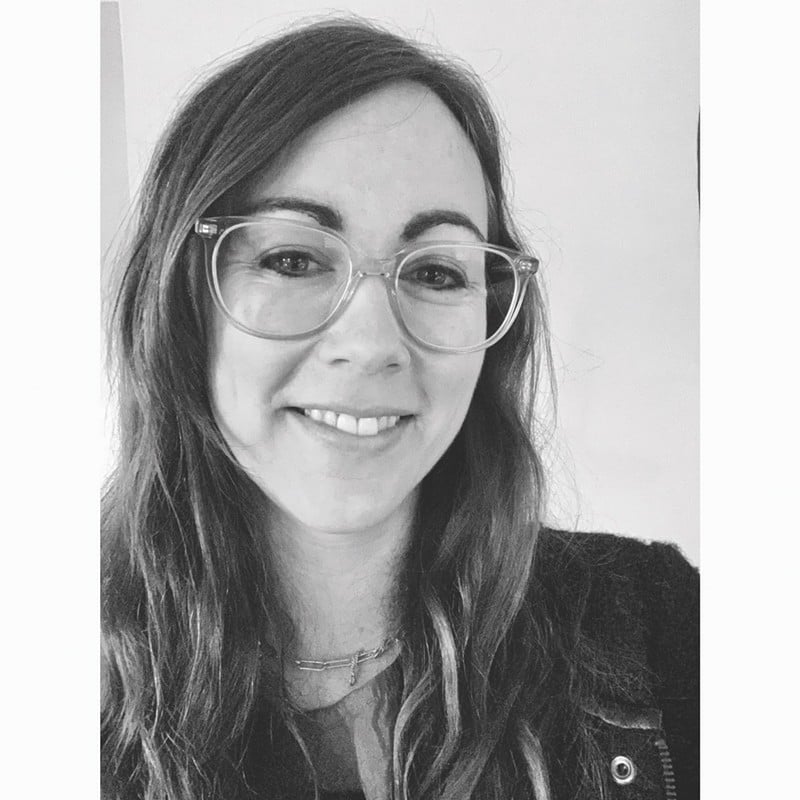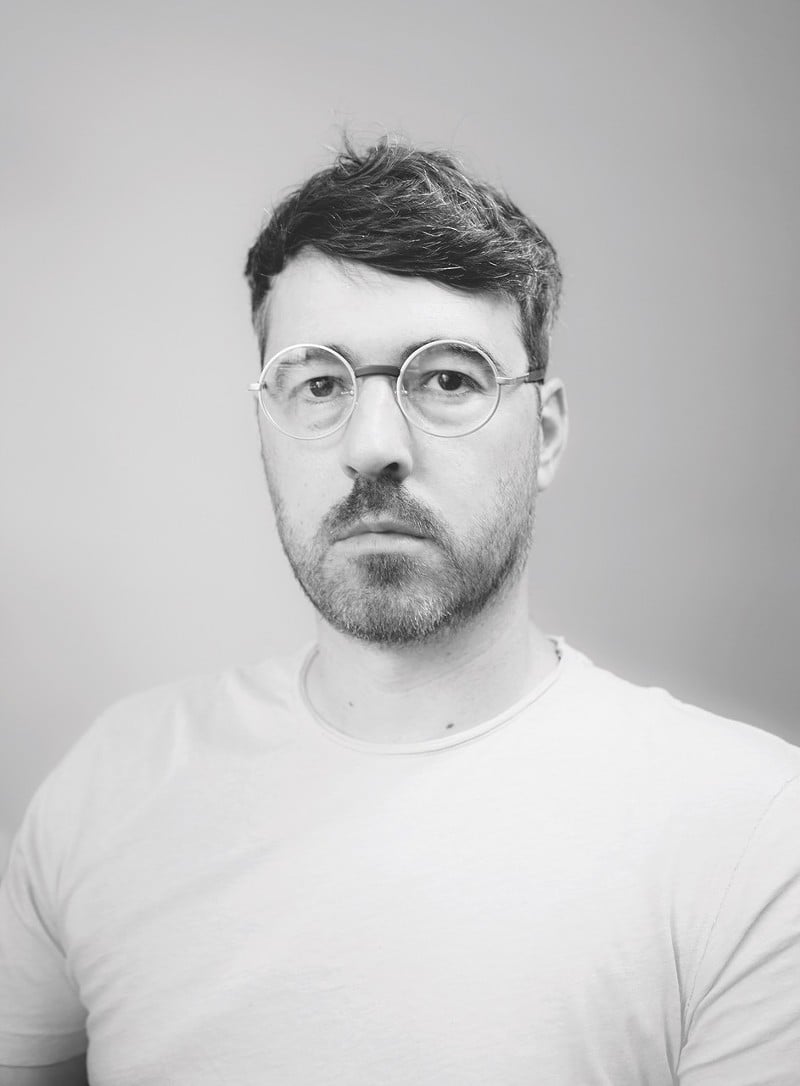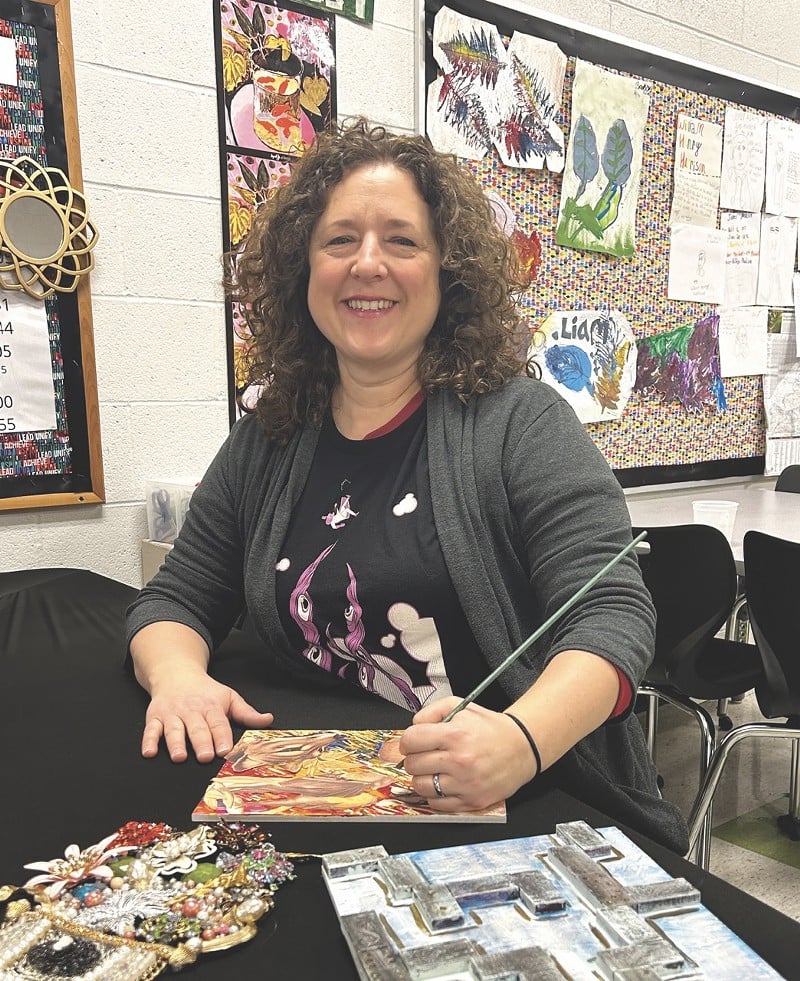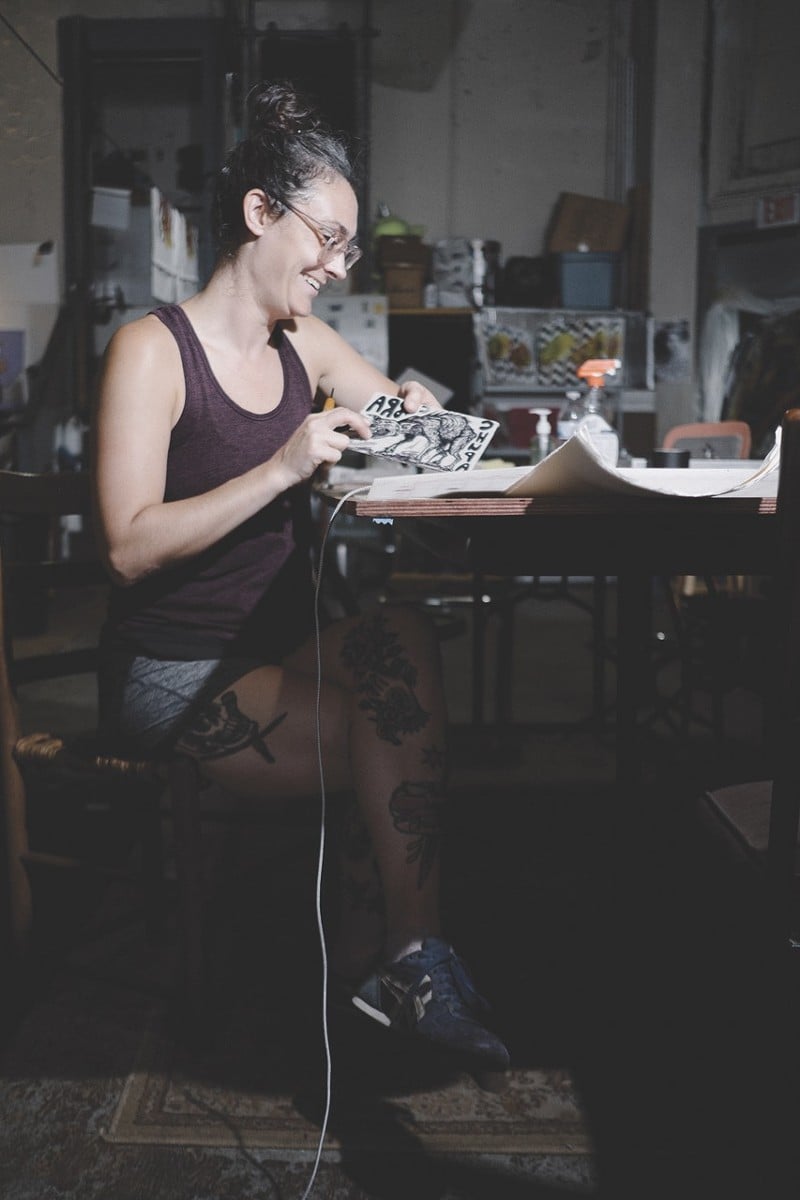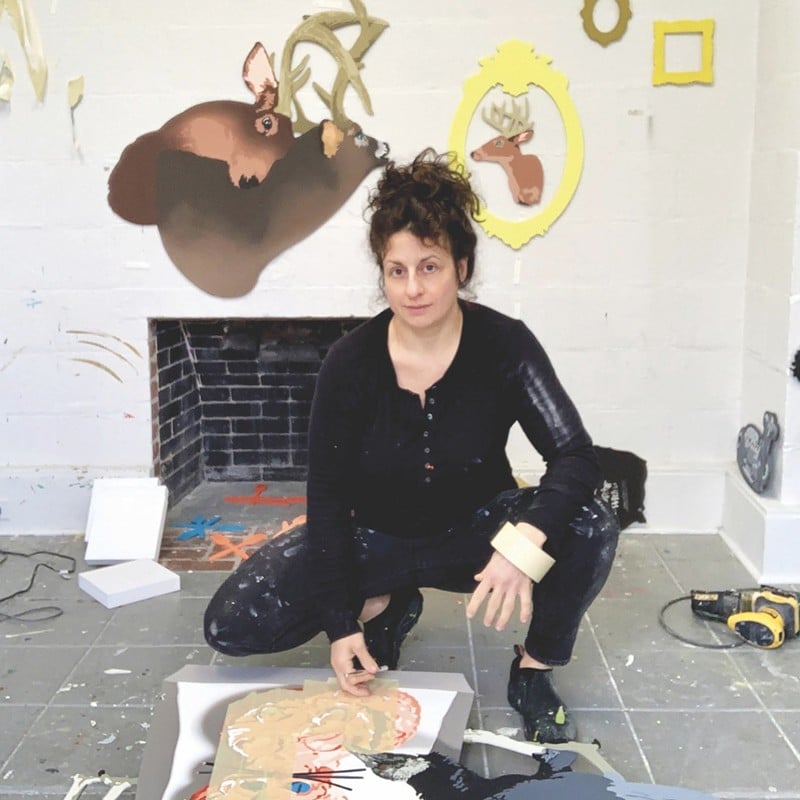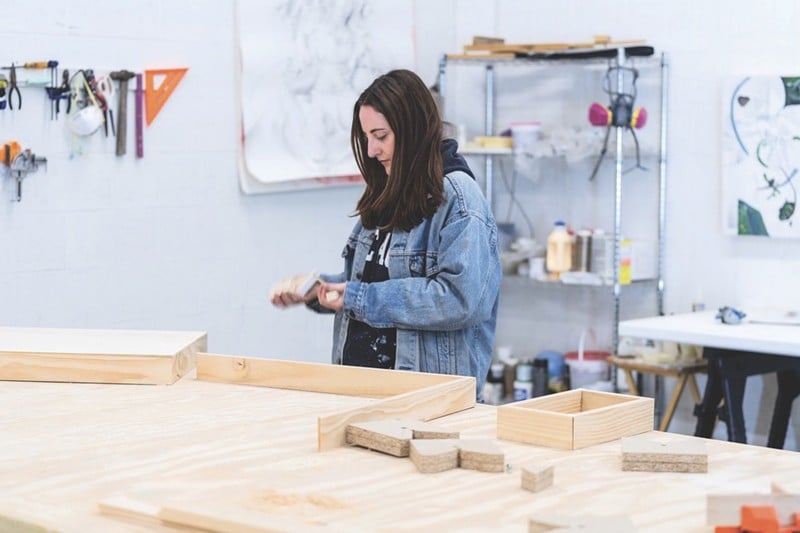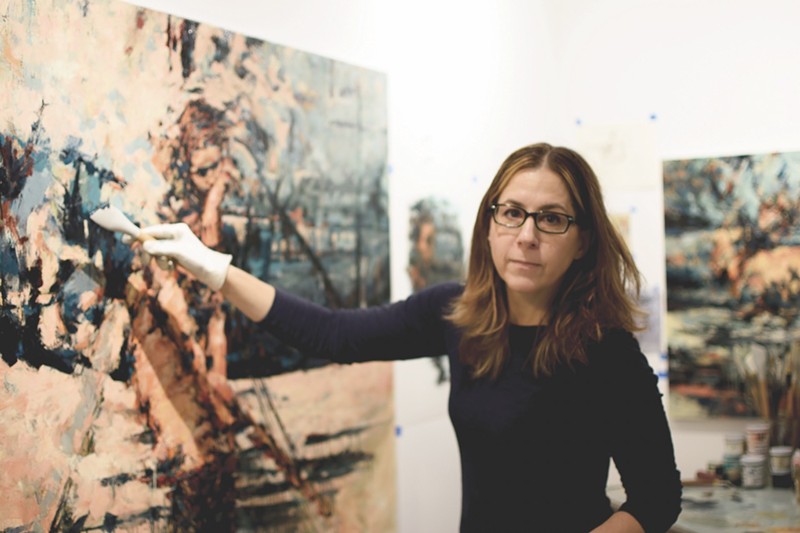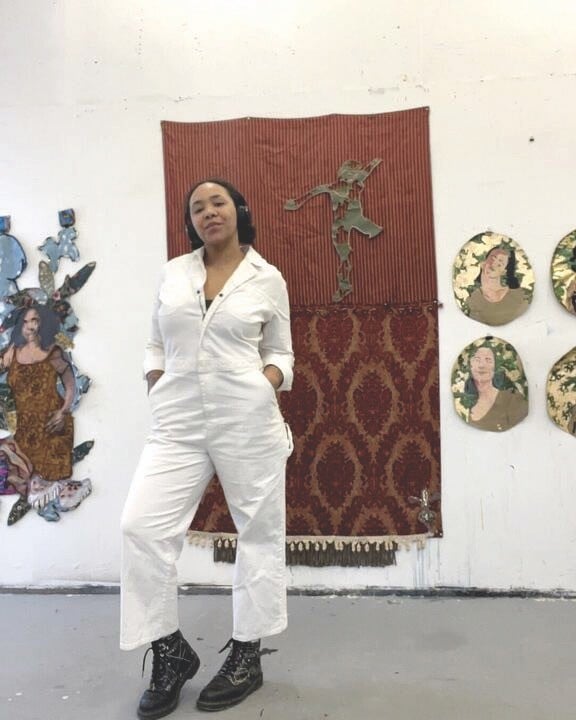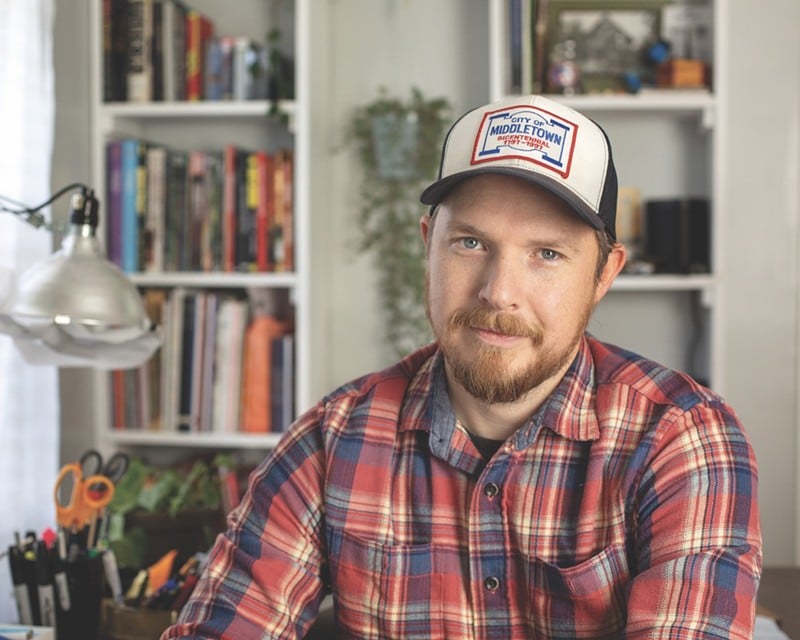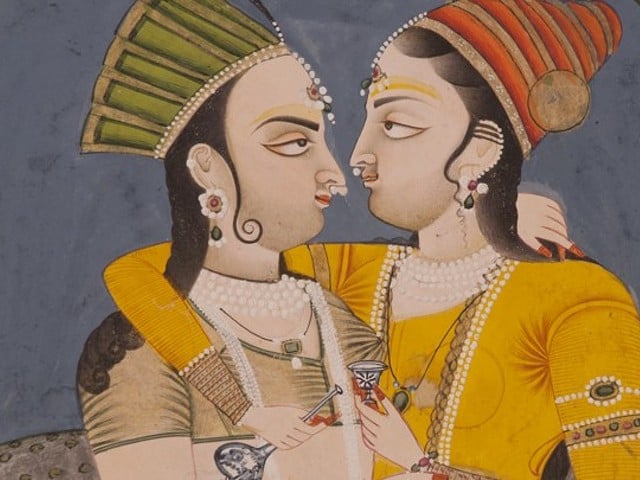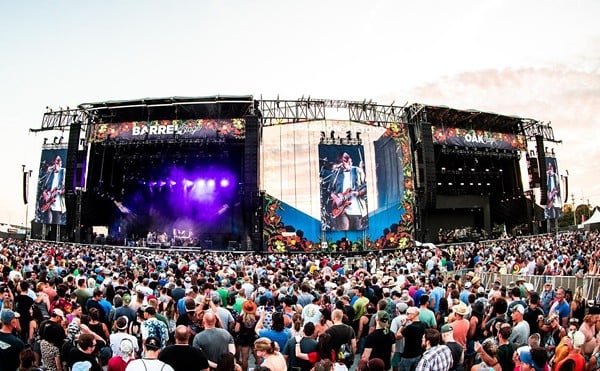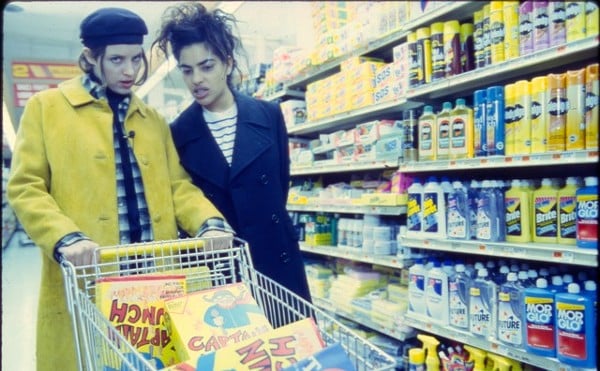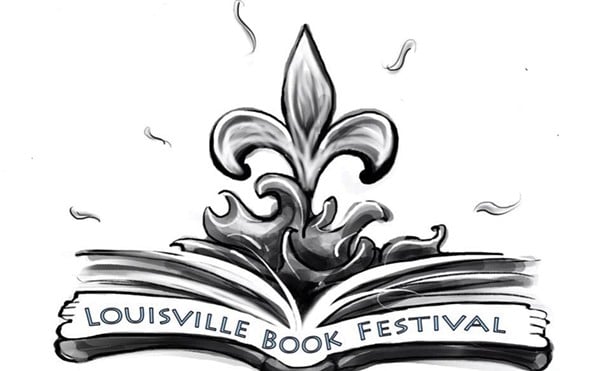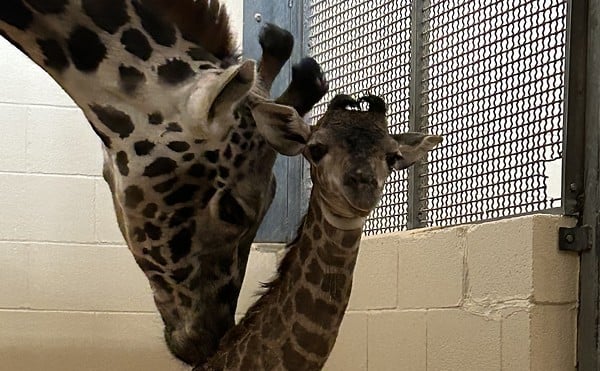The Great Meadows Artist Professional Development grant is aimed at bettering the careers of Kentucky artists. The grant encourages artists’ growth by expanding access to skill building and connection opportunities, and by helping artists reach beyond the limits of their state and even their nation, binding them with a greater arts world. The next grant cycle applications closed on Sunday, Feb. 11. For information about future grant cycles visit: Notes for Applicants on the Great Meadows Foundation website.
Round 23 Grantees
Josh Azzarella
● Name: Josh Azzarella
● Age: 45
● Pronouns: He/Him/His
● What is your art medium and how did you decide to pursue art as a career?
My practice is multidisciplinary, encompassing still images, video, and objects that critically engage with significant cultural events. My research is rooted in altering or removing the punctual event in these moments to explore the power of authorship in collective memory. This approach encompasses popular historiography and the indexical document, where I seek to interrupt, displace, or interfere with the moments that make up our personal and shared histories. I've pursued this path due to my interest in how collective memories are formed, altered, and understood in the context of visual culture. My early practice was formalist black and white photography, heavily influenced by the works of artists like Baltz, Frank, and Eggleston. Over time, my practice evolved to incorporate a broader range of media, allowing for a more expansive exploration of these themes. The decision to pursue this path was a progression from my deepening engagement with these concepts and the desire to contribute to the larger postmodern conversation about reality and memory.
● You were awarded an Artist Development Grant, what are your plans for the grant?
Traveling to New York to see the Ed Ruscha 'Now Then' exhibition at MoMA, Spike Lee 'Creative Sources' at the Brooklyn Museum, and 'Manet / Degas' at the Metropolitan Museum.
● Where would you like to see your art in 5 years?
Ideally, my work will increasingly contribute to a nuanced understanding of the shaping of history and perception of reality. This will be achieved by integrating emerging technologies and fostering collaborations with scholars and artists across various disciplines.
● What would you like to see happen in Louisville for local arts and artists?
I would like to see Louisville's local arts scene become a vibrant hub for innovative and interdisciplinary art practices. This would involve creating more platforms for diverse artistic voices, particularly those that challenge conventional narratives and encourage critical discourse on contemporary issues. Furthermore, fostering stronger networks and collaborative opportunities between artists, cultural institutions, and the community is crucial. This could be achieved through artist residencies, workshops, and public art projects that engage with the community and reflect its diverse experiences and histories. Investment in arts education and outreach programs is also essential, ensuring that the arts are accessible to all and that emerging artists have the resources and mentorship they need to develop their practices. Ultimately, I envision a Louisville arts scene that is recognized for its dynamic, inclusive, and thought-provoking contributions to the wider art world, one that nurtures local talent while also attracting national and international attention.
● Why does art matter to you?
Art matters because it represents a fundamental aspect of human expression and legacy, enduring through the rise and fall of civilizations. It's a testament to the cultural, intellectual, and emotional landscapes of societies. When a society falls, the remnants of its art, along with its technology and science, become the foundations upon which new societies build and understand the past. This perspective shapes my view of art not just as a medium for personal or contemporary expression, but as a crucial component of our collective historical record. Art captures the essence of a society's identity, its aspirations, and its challenges. It's a mirror reflecting the complexities of human experience across time. In my practice, I am acutely aware of this enduring quality of art. My work aims to interrogate and recontextualize historical and cultural imagery, understanding that today's artistic contributions will inform future perceptions of our current era. Art, in this sense, is both a record of the past and a message to the future, holding within it the potential to influence and inspire long after our own time has passed.
Bret Berry
● Name: Bret Berry
● Age: 40
● Pronouns: They/Them
● What is your art medium and how did you decide to pursue art as a career?
Interdisciplinary/ mixed media, currently focused on sound, sculpture, and digital image-making. After a variety of attempts at more conventional livelihoods, I concluded that a life focused on creative pursuits is the only satisfactory thing. It’s what I would come closest to calling my “destiny”.
● You were awarded an Artist Development Grant, what are your plans for the grant?
I am participating in a monthlong residency/ retreat at Arteles Creative Center in Finland and attending the CTM Festival for experimental music and sound art in Berlin, Germany.
● Where would you like to see your art in 5 years?
Experimenting and uncovering new territory through my creative practice is a lifelong commitment. Five-year goals include greater interdisciplinarity, larger-scale works, and more opportunities for residencies, exhibitions, and commissions.
● What would you like to see happen in Louisville for local arts and artists?
More diversity, equity, inclusion, and visibility. More art education. More funding for new and emerging artists. More artists playing crucial roles in cultural, social, and political institutions.
● Why does art matter to you?
Art is the semiotic cosmos we dwell in and draw from to signify the vast swath of experience for which conventional language cannot account. It’s the illogical grammar of the heart and intuition. I virtually have no choice but to make things. It’s a healthy, joyous compulsion. The creative impulse is an important human attribute that is, in essence, simply the habit of making stuff. It includes the capital-A-Arts, of course; but it’s truly any act grounded in the drive to experience and share awe through the significant production of a thing. What perhaps elevates Art somewhat above this basic feature of the psychophysical organism is its potency, progressiveness, and capacity to enjoin us toward self-education and reflexivity.
Sinclaire Dorsey
● Name: Sinclaire Dorsey
● Age: 24
● Pronouns: She/Her
● What is your art medium and how did you decide to pursue art as a career?
My medium of focus is functional ceramics fired in wood kilns. I've always been drawn to the arts throughout my life. I decided to pursue it as a career by enrolling at Morehead State University, where I obtained my Bachelor of Fine Arts.
● You were awarded an Artist Development Grant, what are your plans for the grant?
With the Artist Development Grant, I will travel to the National Council on Education for the Ceramic Arts (NCECA) annual conference. During the week-long conference, I will attend educational panels, engage in group discussions, visit many gallery exhibitions across the city, and network with leading professionals in the ceramic arts.
● Where would you like to see your art in 5 years?
I aspire to have my ceramic work showcased in galleries nationwide and integrated into the public's daily lives while growing its conceptual integrity.
● What would you like to see happen in Louisville for local arts and artists?
I would like to see more affordable and accessible resources and educational opportunities for those starting their journey in the arts.
● Why does art matter to you?
Art holds a special place in my heart. Every person has an innate creativity, and the arts, no matter the form, are a way to express that creativity. Artistic expression allows us to share our unique human experiences, fostering a sense of community and belonging. Ultimately, art improves our quality of life and enriches our human experience.
Casey Dressel
● Name: Casey Dressel
● Age: 43
● Pronouns: She/Her
● What is your art medium and how did you decide to pursue art as a career?
My artistic mediums are painting, installation, and craft based mediums.
● You were awarded an Artist Development Grant, what are your plans for the grant?
I plan to see the Venice Biennale and the exhibitions occurring within Venice during the Biennale with the Artist Development Grant.
● Where would you like to see your art in 5 years?
I would like to continue to develop and explore new ways of thinking and modes of working in my artistic practice.
● What would you like to see happen in Louisville for local arts and artists?
I would like to see the Louisville art community continue to grow, new artistic venues and platforms emerge here, and the arts community come together to showcase and elevate the artistic conversation and expression to create an even more vibrant art scene here in Louisville.
● Why does art matter to you?
Art is important to me personally because I enjoy the creative process and making art, it is a process that helps me grow as a person, and I believe that artistic expression is one of the most important elements of our society.
Forest Kelley
● Name: Forest Kelley
● Age: 43
● Pronouns: He/Him/His
● What is your art medium and how did you decide to pursue art as a career?
As an artist, I have navigated parallel paths in visual art and experimental music. Over the years, these distinct creative approaches have converged, resulting in a practice that increasingly integrates narrative-driven visual art with experiential and time-based sound. I decided to pursue a career as an artist simply because I wanted creativity to be central to my life.
● You were awarded an Artist Development Grant, what are your plans for the grant?
I will travel to Berlin, which is a hub for innovative sound and installation art. As my practice moves increasingly toward interdisciplinary and innovative approaches in these fields, the city holds immense significance for me. Berlin has played an outsized role in the development and contemporary interpretation of cultural forms whose roots began in the United States, from experimental music, to conceptual and minimalist art, to Detroit Techno. It is specifically the dual relationship to sound and visual art that holds so much potential for me as an artist. I plan to meet with artists and institutions making unique contributions to sound and visual art in order to find inspiration for my own work and teaching.
● Where would you like to see your art in 5 years?
I hope that my art in five years is unimaginable now.
● What would you like to see happen in Louisville for local arts and artists?
I'm interested in alternative and artist-run art spaces. I would love to see an expansion of energy and support for these types of creative sites and communities. This would help to make art more accessible as well as allow it to reflect and grow the creative ideas and culture of the region. For me, art and creativity are central to a life filled with joy and discovery. It is a way of seeing and experiencing the world with curiosity and openness.
Casey Kirk
● Name: Casey Kirk
● Age: 46
● Pronouns: She/Her/Hers
● What is your art medium and how did you decide to pursue art as a career?
I enjoy a variety of art forms and currently favor found object collage. I have always been a collector of remnants. Pieces of things are exciting to me because they offer their own history that I can transform into a new present. Transforming spaces, small and large, drives my practice. I would find things on the street when I was five and beg my mom to let me take them home. I would use stolen school supplies from her classroom to paint or glue them together and take a wagon around to my neighbors to try to earn a nickel each. Making things is my way to connect to other people and art will always be the center of my life. I'm also pragmatic and chose teaching art as a way to keep me creating while also earning a steady paycheck. I wish I had been a little riskier in my youth to see how far I could have pushed myself as a full time artist. I do feel like I'm now more able to tackle interesting projects because I have experience in printmaking, collage, painting, ceramics, sculpture, drawing and fiber arts through my teaching pursuits.
● You were awarded an Artist Development Grant, what are your plans for the grant?
I am taking a trip to California and Nevada to see some amazing museums. I'm excited about getting to explore the Getty Center and seeing Van Gogh's Irises in person. I will be able to stand where he stood when painting and imagine him applying paint to canvas. Experiencing art in person feels like engaging in a timeless dialogue with the artist, a connection through time. I will also see the Los Angeles County Museum of ARt's collection of contemporary jewelry. I've looked at the pieces online for years, and can't wait to see them up close. I look forward to walking through each museum to discover new pieces and projects. The highlight of my trip will be traveling to Las Vegas to see Meow Wolf's Omega Mart. It is my dream to be part of a collaborative effort to transform a large scale space into something of wonder. I'm hoping that being in that immersive space will help me gain new insight and inspiration for my own work. I also plan on visiting an artist collective while I am in Nevada to meet artists and see their studios. Where would you like to see your art in 5 years? I have been participating in my gallery shows across Kentucky and will continue to seek out opportunities to share my work. My hope is to be working on a large installation within five years and partner with other Kentucky artists to create a space where time stops and everyone can feel the moment.
● Where would you like to see your art in 5 years?
I've visited all of the museums in Louisville and have been known to yell "We've got a Monet in Kentucky!" when walking with friends. The Speed is awesome and so is KMAC. Their collections and exhibitions are well curated and always exciting to explore. I would love to see KMAC expand like Cincinnati's CAC so that there is even more space for exhibitions and an expanded educational center. Having a space like the CAC's UnMuseum would be incredible so that all people can find new ways to interact with Contemporary art. The National Art Education Association conference will be held in Louisville next year and that will draw thousands of artists from around the country and globe to our neck of the woods. I hope that they will see a thriving and growing art scene that makes them want to come back for more.
● What would you like to see happen in Louisville for local arts and artists?
Art is a reflection of culture and history. It captures the spirit of different eras, allowing us to connect with the past. Art inspires creativity, imagination, and encourages innovative thinking. These are skills that will be brought to the forefront in our changing world culture. I use art as a vehicle for communication and connection and for personal well-being.
Katie Knudsen
● Name: Katie Knudsen
● Age: 36
● Pronouns: She/Her
● What is your art medium and how did you decide to pursue art as a career?
My art medium is mostly printmaking and I love to draw and paint. Art has always been a source of joy for me, for as long as I can remember, but when thinking about it as a career it was never a clear path. I worked in food and beverage for seventeen years while continuing to create in hopes something would pop off, then COVID popped off. I had already been contemplating my future in hospitality as a 'practical' career and the shut down made me look at my quality of life. I love food and beverage but it isn't my passion like art is and that is when the scale tipped in favor of joy, a sense of fulfillment, and higher quality of life. I took the leap and became a full time artist three years ago and it's been the best decision of my life.
● You were awarded an Artist Development Grant, what are your plans for the grant?
With the Great Meadows Artist Development Grant I will be taking a tour of Scotland and finishing my trip with a jump over to Copenhagen. I will travel for twenty days and go to multiple print shops, art galleries, and art museums in Aberdeen, Glasgow, Inverness, and Edinburgh. In Aberdeen I will network with Nuno Sacramento at Peacock Studios where I'll be in contact with working artists and get the inside scoop on smaller contemporary art galleries to visit. I have also been in contact with Katharina Hill, an artist who lived and worked in Denmark who suggested I look into RFSU, an organization that works to promote sexual health, which is a focus in my art. While in Copenhagen I will absolutely be going to the Louisiana Museum of Modern Art as well to see work from artists that inspire me such as Giacometti, Warhol, Lichtenstein, Hockney and Jorn.
● Where would you like to see your art in 5 years?
In five years I'd like to see more interdisciplinary work. I'd like to push my print techniques and find ways to be innovative and make art that leaves an impact. I think it would be cool to make pieces that had people wondering how I made it and while investigating that asking why make it at all. I've been intimidated to make large scale artwork and I'd like to see that change. I want to make art for art's sake and not get caught up in the cost of materials. I'd like to participate in more group and solo exhibitions and see my art travel beyond Louisville.
● What would you like to see happen in Louisville for local arts and artists?
In Louisville I'd like to see more shared resources in the way of cooperatives for art making, group critiques, and art exhibition space (to name a few). Let's bring back trade work to learn new skills! I'd like to see artists working together to provide education to the youth about art, its history, techniques, and career options. I'd like to see artists lifting each other up and working in tandem to support one another.
● Why does art matter to you?
Art brings me so much joy and fulfillment, I wouldn't feel like myself without it. To me, art is the universal language — the mother tongue, it knows no boundaries and crosses all cultures. It has the ability to connect people and challenges them to think critically. It will last beyond my life and forever be in history as an example of what life was like, from the mundane to the magnificent.
Lori Larusso
● Name: Lori Larusso
● Age: 43
● Pronouns: She/Her
● What is your art medium and how did you decide to pursue art as a career?
I make paintings and installations. I've had various different jobs over the years, and always made artwork as well.
● You were awarded an Artist Development Grant, what are your plans for the grant?
I plan to visit the 60th Venice Biennale.
● What would you like to see happen in Louisville for local arts and artists?
Unrestricted funds for artists, as well as healthcare, childcare, and eldercare for all humans.
Sara Olshansky
● Name: Sara Olshansky
● Age: 28
● Pronouns: She/Her
● What is your art medium and how did you decide to pursue art as a career?
2D media, drawing and painting. I think "decide" may be the wrong word to describe my path towards the arts. I often feel that I couldn’t do anything else if I wanted to. I’ve been drawn to visual arts since I was a child. Maybe many artists feel the same.
● You were awarded an Artist Development Grant, what are your plans for the grant?
I will attend the Venice Biennale in May for the first time. After a week in Venice, I will travel to Florence and Rome to view the art institutions there as a way to contextualize the contemporary art at the Biennale. It will be my first time in Italy.
● What would you like to see happen in Louisville for local arts and artists?
I think the city would greatly benefit from exhibitions spaces, especially non-commercial, DIY galleries, collectives, or pop-ups. It would be exciting to see artist-run programming or curation that highlights the breadth of artistic practices in Louisville, from the underrepresented to the experimental in conversation with those who have established themselves at Louisville institutions already. Spaces like Houseguest in the South End, Carbon Copy, or Snide Hotel—while Houseguest is open still the ladder two both have closed but had lasting impact while open, are good examples of galleries already doing this kind of work. There is quite a vibrant community here given its size; however, the closures have left a gap waiting to be filled.
● Why does art matter to you?
Art matters to me for many reasons. It’s hard to summarize. To put it simply, art has always been a part of my life—a necessity in many ways. From a universal perspective, art indicates the shifts, attitudes, and innovations in cultural production, which can provide a reflection of what is happening at the moment the work is made—a tool for understanding today and a historical resource for posterity. In its most basic form, it is interesting and enjoyable to be around.
Yvonne Petkus
● Name: Yvonne Petkus
● Pronouns: She/Her
● What is your art medium and how did you decide to pursue art as a career?
Painting is the primary medium I use, and I work from that lens, though have also pushed into multiple-planed painting installations and incorporate printmaking into my work at times too. My career is based on seeing art-making as a means to ask questions and further thought, and I work to do this through my own practice, through teaching, and in working with other artists in several capacities. I have been fortunate to know this was the right path since just before my first year of college and found early on that painting was where I was able to ask my best, most difficult, questions.
● You were awarded an Artist Development Grant, what are your plans for the grant?
I have just begun a sabbatical from teaching that will include one month at an artist residency program just outside of Florence, Italy, followed by Great Meadows Foundation grant-supported time exploring work at the Venice Biennale in Venice, then a presentation and time in Bosnia and Herzegovina. My sabbatical and residency title is Processing Memory, Processing Place: Traces, Forces, Actions and comes as an extension of my current studio work, the mediation of imagery through a physical processing that results in states of fragmentation, veiling, and distortion. My aim, with the support of the Great Meadows Foundation, is to dig deeply while exploring new inputs and continued connections both in Italy and in Bosnia.
● Where would you like to see your art in 5 years?
My ongoing practice includes the questioning and pushing of visual language while staying responsive to the surrounding world – something that will continue within each next body of work, segment of time, and larger societal happenings. While I use imagery within my work and find that it provides me with anchors and cues, what I actually paint are the moment-to-moment negotiations, the pressure points, that have emerged in our current times. In a recent exploration of cases for a new sublime in contemporary painting (for a talk in Richmond, Virginia this past fall), I found that the term "weight" has supplanted the word "sublime" for what I (and other contemporary painters) propose through the work. Here it is no longer the Sublime of the past, not the larger-large or terrible awesome, but rather a "weight", found incrementally through a million small-largenesses, used as pressure points for a similar question of our relationship to what now terrifies, to what now awes. In the last five years the pandemic has added to this, as have all the things, the little-big things and big-big things that add up – that affect, distort, inform. So my goal is to make work whose structure leads and informs but also that stays open enough to be able to incorporate that which comes up, as both expected and unexpected, over the next five years as well.
● What would you like to see happen in Louisville for local arts and artists?
As a studio artist and educator based in western Kentucky, Louisville has been a great resource and site of opportunity for me and for my students. I would like to see that connection of cities and other locations across Kentucky continue to build, something the Great Meadows Foundation has been a key player in fostering.
● Why does art matter to you?
The importance of artistic processing and artistic production is evident throughout history, as a way and means to understand, connect, and possibly move forward as a society. While the stakes are high, the way in is very human, achieved one mark at a time. And the making of artwork can be a humbling act, one needing a combination of extreme conviction as well as healthy doubt. That potential, however, to take on and find form for the most difficult and meaningful issues that we face and that we carry together, is why artwork matters to me.
Josie Love Roebuck
● Name: Josie Love Roebuck
● Age: 28
● Pronouns: She/Her
● What is your art medium and how did you decide to pursue art as a career?
I am an interdisciplinary artist that utilizes screen printing, painting, yarn, crochet, vintage patches, soft pastel, charcoal, fabric, and so forth, within my tapestry-like-quilts, wood cutouts, and plushy sculptures. My life has always been centered around making art and I was also a college athlete, which made it difficult for me to see art as a career. It wasn’t until my junior year of college, that I witnessed the power that art holds, which pushed me to pursue art fully.
● You were awarded an Artist Development Grant, what are your plans for the grant?
I will be attending the Vermont Studio Residency from January 7th through January 18th, 2024. My plan for my upcoming residency is to create work for two of my upcoming solo shows (Summer and Fall). Specifically, focusing on a new body of work entitled, The Poetics of Trauma. This series is geared towards breathing life and healing into the hardships that women face, while providing a platform so that their stories can be heard.
● Where would you like to see your art in 5 years?
Within 5 years or less, I would like to see my art acquired by a museum and have a solo show. In addition to that, I just want to be self-sufficient as a full-time artist.
● What would you like to see happen in Louisville for local arts and artists?
I am based in Newport, Kentucky, and I haven’t been a part of the Louisville art community.
● Why does art matter to you?
There are a lot of things that make art important to me, one of the top things is the connection and knowledge gained from my audience. Through sharing my own challenges and triumphs, as well as others who have shared their story with me, it allows people to get a glimpse of what life is like for others and what life can be for themselves.
James Southard
● Name: James Robert Southard "Rob"
● Age: 40
● Pronouns: He/Him/His
● What is your art medium and how did you decide to pursue art as a career?
Digital photography is the medium where the vast majority of my work is produced. I was a young student at UL working in the dark room when they offered their first digital photo course. Since then I’ve been hooked. The capability to build anything from whatever materials you can photograph or scan, is dazzling. I’ve stuck with it till this very day and that is exactly what I teach at UK to our School of Art & Visual Studies students.
● You were awarded an Artist Development Grant, what are your plans for the grant?
I’ll be visiting Brazil for the first time to tour around the States of Parana and the State of Sao Paulo to meet with artists, curators and start a new series about labor in this corner of South America. I was offered a residency at Kaaysá, located in Boiçucanga beach, São Sebastião, 100 miles from São Paulo city. I plan to arrive there for a month of working with other artists from all over South America and the world while also photographing the fisherman and craftsmen of the coastal region. Soon after, I’ll be going to São Paulo and Curitiba to meet with curators and artists to see how like minded artists live and work there. I’ll also be working with laborers in the region to expand this research into the life and work of southern brazilians.
● Where would you like to see your art in 5 years?
When I first started photography, I was creating work that examined my own personal history and concerns. For the past 10 years I have turned my lens outward and used my studio practice to help other communities and individuals portray their own hopes, history and fears. It has been very exhilarating to travel and learn from people all around the world. Though, I do miss the challenging exercise that is self reflection through their own studio practice. It can be thought provoking and even heartbreaking at times, but I have felt that some of my strongest work from my past came from this practice of making yourself completely vulnerable to your audience. I hope to return to this work methodology soon.
● What would you like to see happen in Louisville for local arts and artists?
As a Louisville transplant to Lexington, I have been eager to find ways to connect the triangle. By triangle, I mean Northern KY, Louisville and Lexington. You can often find me driving a few Lexingtonian artists to Louisville for an exhibition or coaxing Louisvillians or Northern Kentuckians to events in Lexington. I don't see Kentucky as a region hosting just pockets of art colonies, but a state that flows from end to end with creatives networking and executing projects. Many artists I work with here in Lexington are from the other two corners of the Triangle, while many artists I know in Louisville attended UK and are always looking for opportunities to come back. My biggest goal is to step back and see an art community where we all benefit from the vibrant art scenes in all three cities in the triangle.
● Why does art matter to you?
I have always felt that people come to art for different reasons. For me, I always felt it was because I was so bad at everything else. I was always behind my classmates in Math, Language Arts, Sciences.. Hell everything, except the Arts. I loved playing music and drawing all day long as a kid and when someone complimented my work, I was experiencing something I wasn’t familiar with in most classrooms. A complement. Years later, I now see it is a combination of things. I use visual art to address issues that I don't know how to digest. Issues that are too painful or confusing to understand from just dealing with them as a normal citizen. I feel my family knew this long before I did, as they completely supported any art project dealing with family disasters, such as when I did documentied the slow passing of my father. Or the colleague work I did when we had to clear my parents house out of all my late father’s papers and photographs he accumulated. They understand that this was how Rob digested and hopefully, coped with these losses. The feeling of having no direction of where to go next, was helped by examining it through the camera lens. Since then, I have tried to use this same work methodology to help others better understand their own concerns, fears and hopes. I guess I am starting to look more like an overly nostalgic Ethnographer who happens to use a camera and digital editing to exhibit these subjects.
Pictured but not listed with comments: Josh McFadden

